- Choosing the Right Dogwood for Your Garden
- 1. Growing Conditions
- 2. Size and Shape
- 3. Flowering and Foliage
- 4. Disease Resistance
- 5. Native Species
- 6. Maintenance Requirements
- Planting Dogwood Trees: Tips for Success
- 1. Choose the right location
- 2. Prepare the planting hole
- 3. Plant the tree
- 4. Mulch around the tree
- 5. Water regularly
- 6. Prune as needed
- Providing the Ideal Growing Conditions
- Soil
- Sunlight
- Watering
- Fertilization
- Mulching
- Pruning
- Pest and Disease Control
- Winter Protection
- Pruning and Trimming Dogwood Trees
- Why Prune Dogwood Trees?
- When to Prune Dogwood Trees
- Tools for Pruning Dogwood Trees
- Pruning Techniques
- Aftercare
- Hiring a Professional
- Conclusion
- Propagation Methods for Dogwood Trees
- 1. Seed Propagation
- 2. Stem Cuttings
- 3. Layering
- Exploring Different Varieties and Hybrids
- 1. Cornus florida (Flowering Dogwood)
- 2. Cornus nuttallii (Pacific Dogwood)
- 3. Cornus kousa (Kousa Dogwood)
- 4. Hybrid Varieties
- Landscaping Ideas with Dogwood Trees
- 1. Create a Dogwood Grove
- 2. Mix with Evergreens
- 3. Underplant with Perennials
- 4. Highlight with Lighting
- 5. Frame Walkways or Entrances
- 6. Use as a Privacy Screen
- 7. Surround a Water Feature
- 8. Incorporate in a Mixed Border
- 9. Train as Espaliers
- 10. Provide Wildlife Habitat
- Caring for Dogwood Trees: Common Pests and Diseases
- Pests
- Diseases
- Conclusion
- Questions and Answers:
- What are the different types of dogwood?
- How do I cultivate dogwood?
- Can I propagate dogwood through cuttings?
- What are some tips for exploring different varieties of dogwood?
- Are all types of dogwood suitable for every climate?
- Videos: How to Plant and Care For Your Dogwood Tree
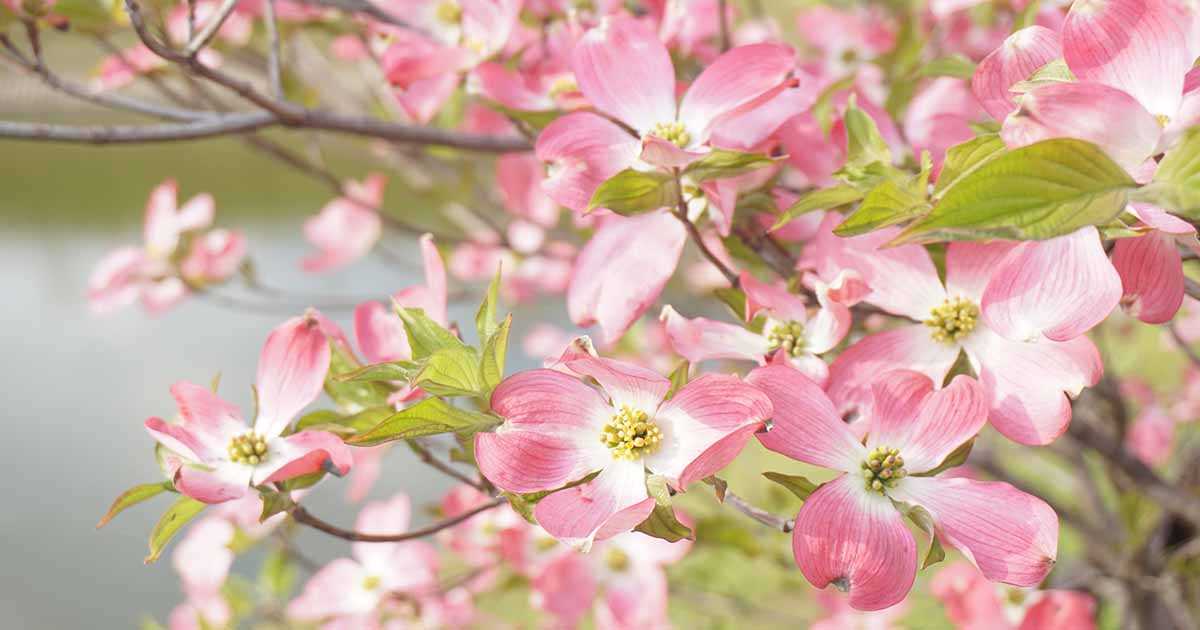
Dogwoods are well-known and beloved trees that are native to North America, Europe, and Asia. With their charming flowers in shades of white, pink, and red, dogwoods bring beauty and elegance to any garden or landscape. In this article, we will explore the art of cultivating and propagating dogwood trees, as well as the different types and varieties that are available.
When it comes to cultivating dogwoods, it is important to choose the right location. Dogwoods prefer well-drained soil and partial shade, although they can tolerate full sun with adequate moisture. They also require regular watering, especially during dry periods. In terms of propagation, dogwoods can be grown from seeds, cuttings, or grafts. It is important to take care when transplanting young dogwood trees, as their root systems are delicate.
There are many different types and varieties of dogwoods to explore. The most common type is the flowering dogwood (Cornus florida), which is known for its showy flowers and vibrant autumn foliage. Other popular varieties include the red-osier dogwood (Cornus sericea), which features red stems that add winter interest to the landscape, and the kousa dogwood (Cornus kousa), which blooms later in the season and produces edible berries. Each variety has its own unique characteristics and requirements, so it is important to research and choose the right one for your garden.
In conclusion, dogwoods are a stunning addition to any garden or landscape. By understanding the basics of cultivation and propagation, as well as exploring the different types and varieties available, you can enjoy the beauty and elegance of dogwood trees in your own backyard. Whether you choose the classic flowering dogwood or opt for a more unique variety, dogwoods are sure to bring joy and admiration for years to come.
Choosing the Right Dogwood for Your Garden
When it comes to choosing the right dogwood for your garden, there are several factors to consider. Dogwoods are known for their beautiful flowers and foliage, and they can add interest and color to any landscape. Here are some things to think about before making your selection:
1. Growing Conditions
Consider the growing conditions in your garden, such as the amount of sunlight and soil type. Some dogwood varieties prefer full sun, while others thrive in partial shade. Additionally, certain types of dogwoods prefer acidic soil, while others can tolerate a wider range of pH levels. Choose a dogwood that is well-suited to your specific growing conditions for optimal health and growth.
2. Size and Shape


Dogwoods come in various sizes and shapes, ranging from small shrubs to large trees. Consider the available space in your garden and determine whether you want a taller specimen or a more compact variety. Additionally, think about the shape of the dogwood’s canopy. Some varieties have a more rounded shape, while others have a more horizontal branching pattern. Choose a dogwood that fits well with the overall aesthetic of your garden.
3. Flowering and Foliage
Dogwoods are prized for their vibrant flowers and foliage. Some varieties have white or pink flowers, while others have yellow or red blooms. Additionally, certain dogwoods have colorful fall foliage, adding another layer of interest to your garden. Consider the color and seasonality of the flowers and foliage when choosing a dogwood variety.
4. Disease Resistance
Some dogwood varieties are more susceptible to certain diseases, such as powdery mildew or anthracnose. If you live in an area where these diseases are prevalent, choose a dogwood variety that is known for its resistance to these issues. This can help ensure the long-term health and vitality of your dogwood.
5. Native Species
Consider planting a native dogwood species in your garden. Native plants are well-adapted to the local climate and often provide important resources for local wildlife. By choosing a native dogwood, you can support the local ecosystem and promote biodiversity in your garden.
6. Maintenance Requirements
Lastly, think about the maintenance requirements of the dogwood variety you are considering. Some varieties may require regular pruning or specific care instructions. Make sure you are willing and able to provide the necessary maintenance to keep your dogwood healthy and thriving.
By considering these factors, you can choose the right dogwood variety for your garden and enjoy its beauty for years to come.
Planting Dogwood Trees: Tips for Success
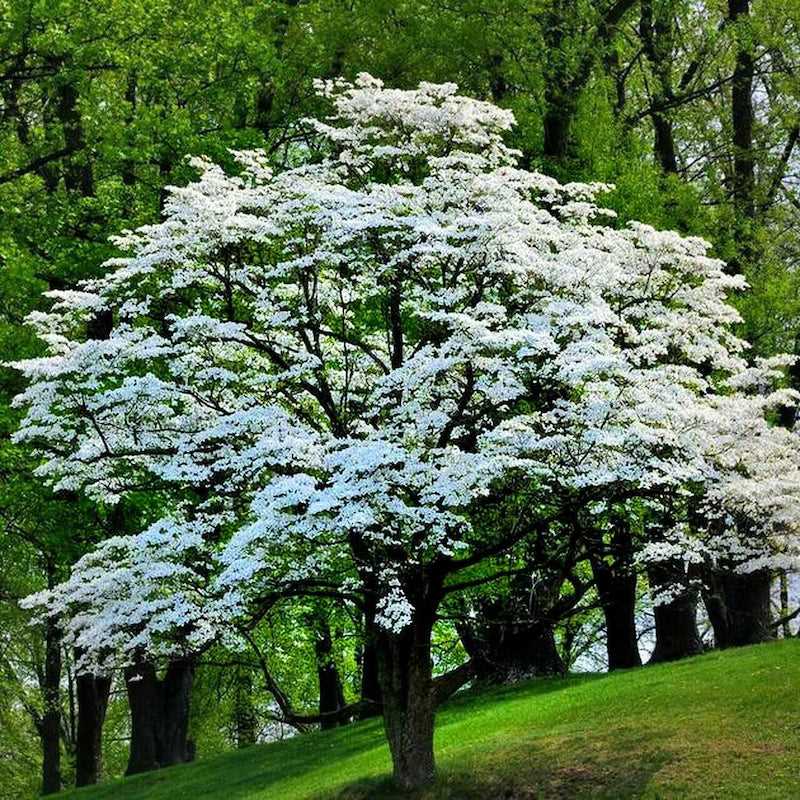

Planting dogwood trees can be a rewarding experience. These beautiful trees are known for their vibrant colors and captivating blossoms. To help ensure the success of your dogwood tree, here are some tips to consider when planting:
1. Choose the right location
- Plant your dogwood tree in an area that receives partial shade. Full sun can be too intense for these trees.
- The soil should be well-draining and rich in organic matter. Dogwood trees prefer slightly acidic soil with a pH between 5.5 and 6.5.
2. Prepare the planting hole
- Dig a hole that is twice as wide and just as deep as the root ball of your tree.
- Loosen the soil in the hole and remove any rocks or debris.
3. Plant the tree
- Gently place the root ball in the hole, making sure it is level with or slightly above the surrounding soil.
- Backfill the hole with soil, tamping it gently to remove any air pockets.
- Water the tree thoroughly to settle the soil.
4. Mulch around the tree
- Add a layer of organic mulch around the base of the tree, leaving a few inches of clearance around the trunk.
- This will help retain moisture, regulate soil temperature, and suppress weeds.
5. Water regularly
- Keep the soil consistently moist, but not waterlogged, especially during the first year after planting.
- Water deeply at least once a week, especially during hot and dry periods.
6. Prune as needed
- Prune your dogwood tree in late winter or early spring before new growth begins.
- Remove any dead or damaged branches, as well as any suckers that may have sprouted.
Following these tips will help ensure the success of your dogwood tree. Enjoy watching it grow and thrive, and be rewarded with its stunning beauty year after year.
Providing the Ideal Growing Conditions
Growing dogwood trees requires providing the ideal growing conditions to ensure their health and vitality. Here are some important factors to consider:
Soil
Dogwoods thrive in well-draining soil that is rich in organic matter. The pH level of the soil should be slightly acidic, ranging from 5.5 to 6.5. Conduct a soil test to determine the pH level and make necessary amendments to achieve the ideal conditions for dogwoods.
Sunlight
Dogwoods prefer partial shade or filtered sunlight. They are understory trees native to forested areas, where they grow beneath taller trees. Plant them in a location that receives morning sunlight and afternoon shade to provide them with the ideal light conditions.
Watering
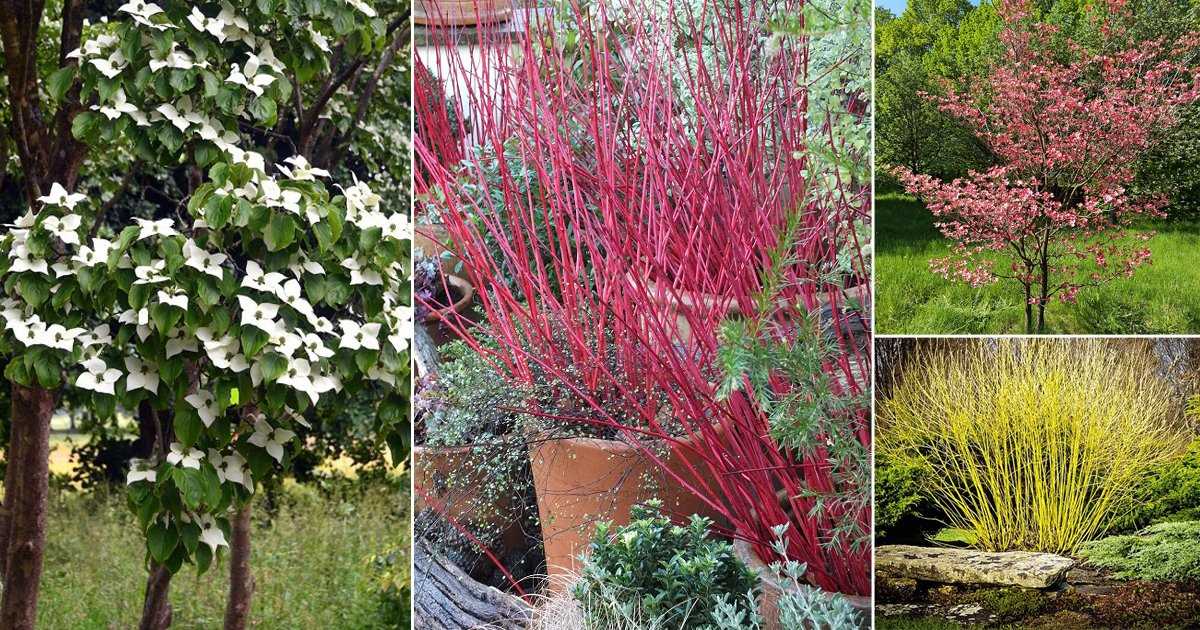

Proper watering is essential for the growth and development of dogwood trees. They require consistent moisture, especially during their establishment phase. Provide them with approximately 1 inch of water per week, either through rainfall or manual irrigation. Avoid overwatering, as it can lead to root rot and other fungal diseases.
Fertilization
Regular fertilization helps dogwoods maintain their health and vigor. Apply a balanced slow-release fertilizer in early spring, following the manufacturer’s instructions. Avoid excessive nitrogen, as it can promote excessive foliage growth at the expense of flower production.
Mulching
Applying a layer of organic mulch around the base of the tree helps conserve moisture, control weeds, and regulate soil temperature. Use a 2-3 inch layer of wood chips, bark mulch, or compost, keeping it a few inches away from the trunk to prevent rot.
Pruning
Pruning dogwood trees is essential to maintain their shape, promote airflow, and remove diseased or damaged branches. Prune in late winter or early spring before the tree starts its active growth. Remove deadwood and thin out crowded branches to improve overall tree health.
Pest and Disease Control
Dogwoods are susceptible to various pests and diseases, including powdery mildew, dogwood anthracnose, and borers. Regularly inspect your tree for signs of infestation or disease and take appropriate measures to control them. This may include applying fungicides, insecticides, or implementing cultural practices such as improving air circulation and reducing humidity.
Winter Protection
During winter, protect dogwood trees from extreme temperature fluctuations, harsh winds, and heavy snowfall. Use burlap or other protective coverings to shield the tree from winter damage. Additionally, avoid using de-icing chemicals near dogwoods, as they can harm the tree and its roots.
By providing the ideal growing conditions, you can ensure the success and longevity of your dogwood trees. With proper care and maintenance, these trees will reward you with their beautiful blooms and vibrant foliage for years to come.
Pruning and Trimming Dogwood Trees
Why Prune Dogwood Trees?
Pruning is an important aspect of caring for dogwood trees. It helps maintain their shape and size, promotes air circulation, and removes diseased or damaged branches. Pruning also encourages new growth and enhances the overall appearance of the tree.
When to Prune Dogwood Trees
The best time to prune dogwood trees is during their dormant period, which typically falls between late fall and early spring. It is recommended to avoid pruning during hot summer months, as this can stress the tree and lead to sunburned bark.
Tools for Pruning Dogwood Trees
Before you begin pruning, make sure you have the right tools for the job. Some essential tools for pruning dogwood trees include:
- Pruning shears or secateurs for small branches
- Loppers for larger branches
- Hand saw or pruning saw for thick branches
- Gloves to protect your hands
Pruning Techniques
When pruning dogwood trees, follow these basic techniques:
- Start by removing any dead, damaged, or diseased branches. Cut them back to the nearest healthy branch or the main trunk.
- Thin out overcrowded branches to improve air circulation and sunlight penetration. This will help prevent diseases and promote overall tree health.
- Trim back branches that are crossing or rubbing against each other. This will prevent them from causing damage or creating potential entry points for diseases.
- Prune branches to maintain the desired shape and size of the tree. Make cuts just above an outward-facing bud or branch junction.
- Avoid over-pruning and removing more than one-third of the tree’s canopy at a time. This can weaken the tree and make it more susceptible to stress and diseases.
Aftercare
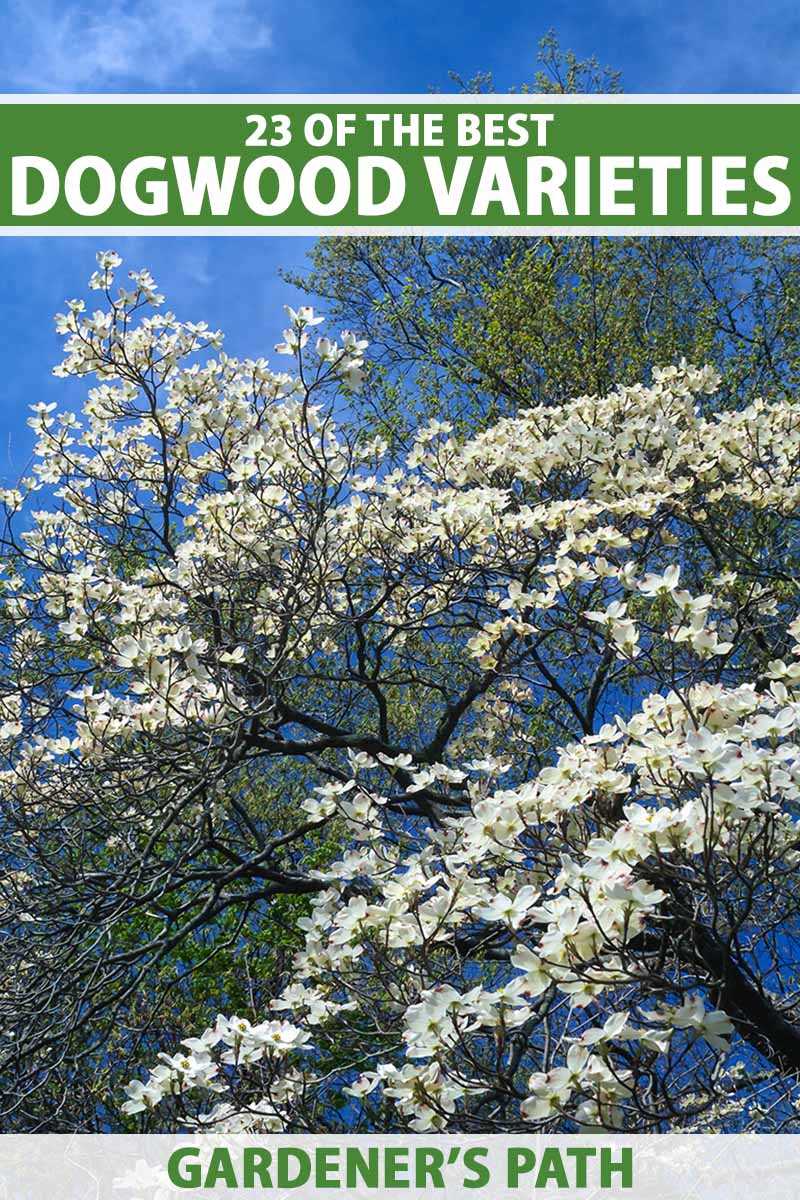

After pruning, it is important to provide proper aftercare for your dogwood tree. This includes watering the tree regularly, especially during dry periods, and applying a layer of mulch around the base to retain moisture and suppress weeds. Monitor the tree for any signs of stress or disease and address them promptly.
Hiring a Professional
If you are unsure about how to prune your dogwood tree or if the tree is too large for you to handle, it is recommended to hire a professional arborist to do the job. They have the necessary skills and equipment to prune the tree safely and effectively.
Conclusion
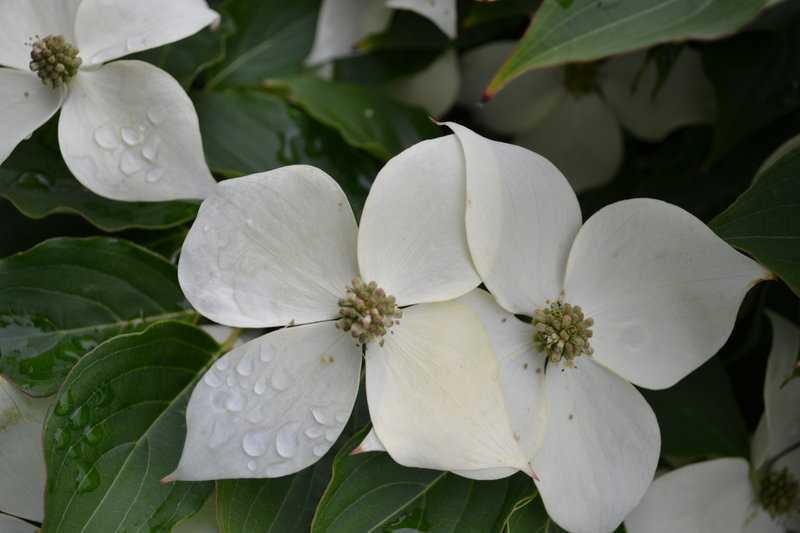

Pruning is an essential part of maintaining the health and appearance of dogwood trees. By following proper pruning techniques and providing proper aftercare, you can ensure your dogwood tree thrives and continues to enhance your landscape for years to come.
Propagation Methods for Dogwood Trees
There are several methods for propagating dogwood trees, including seed propagation, stem cuttings, and layering. Each method has its own advantages and challenges, so it’s important to choose the one that works best for your specific needs and resources.
1. Seed Propagation
Seed propagation is the most common method for growing dogwood trees from scratch. Here are the steps to follow:
- Collect fresh dogwood seeds in the fall, when the fruits are mature and red.
- Remove the fleshy pulp surrounding the seeds by soaking them in water for a few days.
- Stratify the seeds by placing them in a plastic bag with moist peat moss or vermiculite and keeping them in a cool environment for several months.
- Sow the stratified seeds in a well-draining potting mix and keep them moist until germination occurs.
- Transplant the seedlings into individual containers once they have developed a few sets of true leaves.
2. Stem Cuttings
Stem cuttings are another effective way to propagate dogwood trees. Follow these steps:
- Take 6-8 inch long stem cuttings from a healthy dogwood tree in late spring or early summer.
- Remove the leaves from the lower half of the cutting.
- Dip the cut end of the stem in a rooting hormone to promote root development.
- Plant the cutting in a well-draining potting mix or a container filled with perlite or vermiculite.
- Place the container in a warm, bright location, and mist the cutting regularly to maintain humidity.
3. Layering
Layering is a propagation method that works well for dogwood trees with low-growing branches. Follow these steps:
- Select a low, flexible branch that is close to the ground and still attached to the parent tree.
- Gently wound the bark on the underside of the branch using a knife or scissors.
- Apply a rooting hormone to the wounded area.
- Secure the wounded area to the ground using a U-shaped wire or a rock.
- Cover the wounded area with soil and keep it moist until roots develop.
- Cut the newly rooted branch from the parent tree and transplant it to a new location.
It’s worth noting that dogwood trees can also be grafted onto rootstock, especially for specialized varieties or to propagate trees with desirable characteristics. However, grafting is a more advanced technique that requires skill and experience.
By using one of these propagation methods, you can easily grow new dogwood trees and explore different types and varieties in your garden.
Exploring Different Varieties and Hybrids
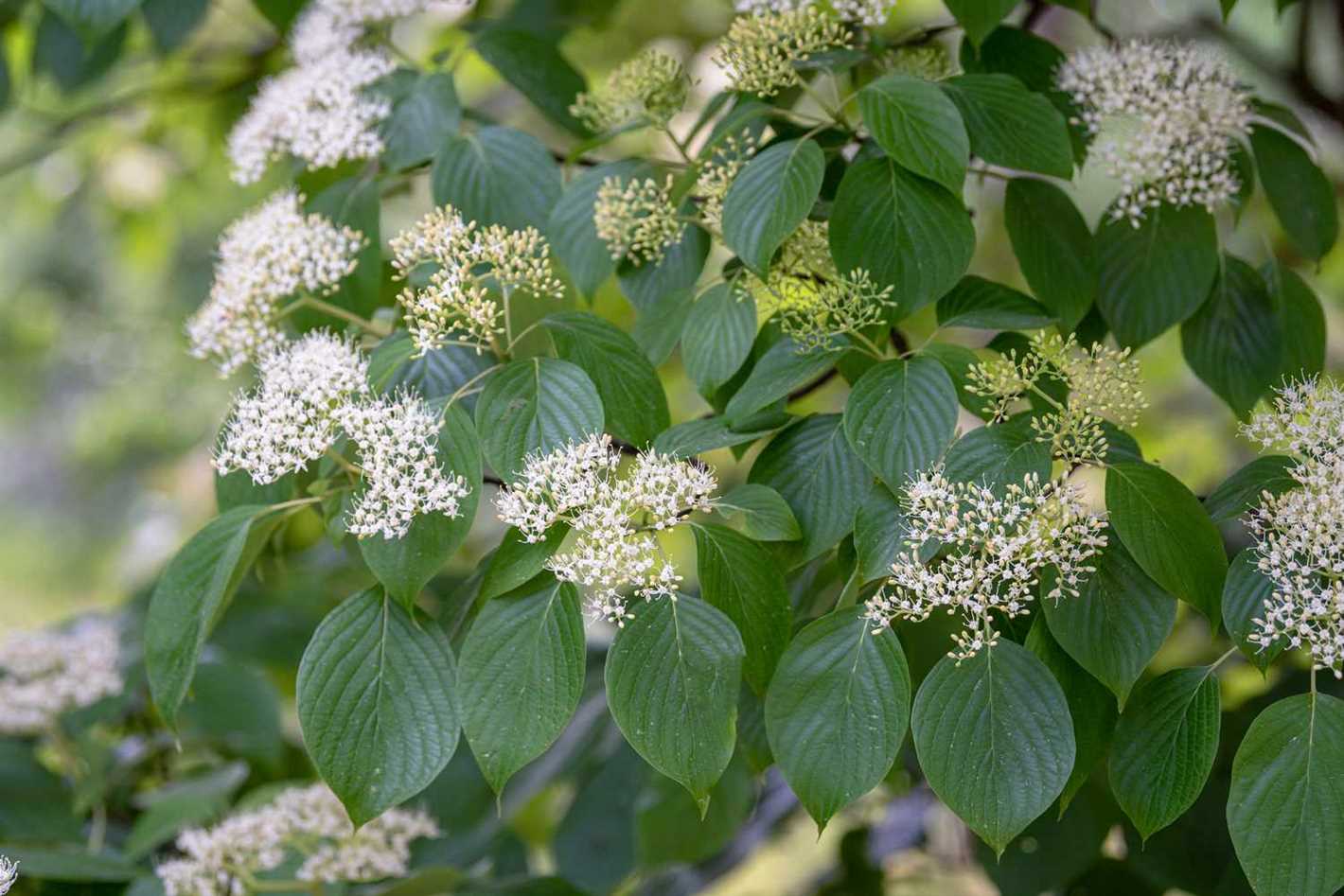

Dogwoods come in a wide range of varieties and hybrids, each with its own unique characteristics and beauty. Here are some popular types of dogwoods that you can explore:
1. Cornus florida (Flowering Dogwood)
The Cornus florida, also known as the Flowering Dogwood, is one of the most popular varieties of dogwoods. It is native to North America and is known for its beautiful flowers, which bloom in the spring. The flowers can be white, pink, or red, and they add a stunning splash of color to any landscape.
2. Cornus nuttallii (Pacific Dogwood)
The Cornus nuttallii, also known as the Pacific Dogwood, is native to the western part of North America. It is a tall tree that produces large, white flowers that have a delicate fragrance. The Pacific Dogwood is loved for its elegant appearance and is often used in garden landscapes and as an ornamental tree.
3. Cornus kousa (Kousa Dogwood)
The Cornus kousa, commonly referred to as the Kousa Dogwood, is native to Asia. It blooms later in the spring than other dogwood varieties and produces small, star-shaped flowers that are white or pink. The Kousa Dogwood is also known for its edible berries, which turn from green to red as they ripen.
4. Hybrid Varieties
In addition to the native dogwood varieties, there are also many hybrid varieties available. These hybrids are created by crossing different types of dogwoods to create a new, unique plant. Some popular hybrid varieties include:
- Cornus x rutgersensis (Rutgers Hybrid Dogwood): A cross between Cornus florida and Cornus kousa, this hybrid combines the best qualities of both varieties.
- Cornus x ‘Eddie’s White Wonder’ (Eddie’s White Wonder Dogwood): This hybrid variety is known for its large, white flowers and disease resistance.
- Cornus x ‘Stellar Pink’ (Stellar Pink Dogwood): The Stellar Pink is a hybrid that features pink flowers and strong, sturdy branches.
Exploring different varieties and hybrids of dogwoods can be a rewarding experience. Whether you choose a native variety or a hybrid, dogwoods are sure to bring beauty and charm to your garden or landscape.
Landscaping Ideas with Dogwood Trees
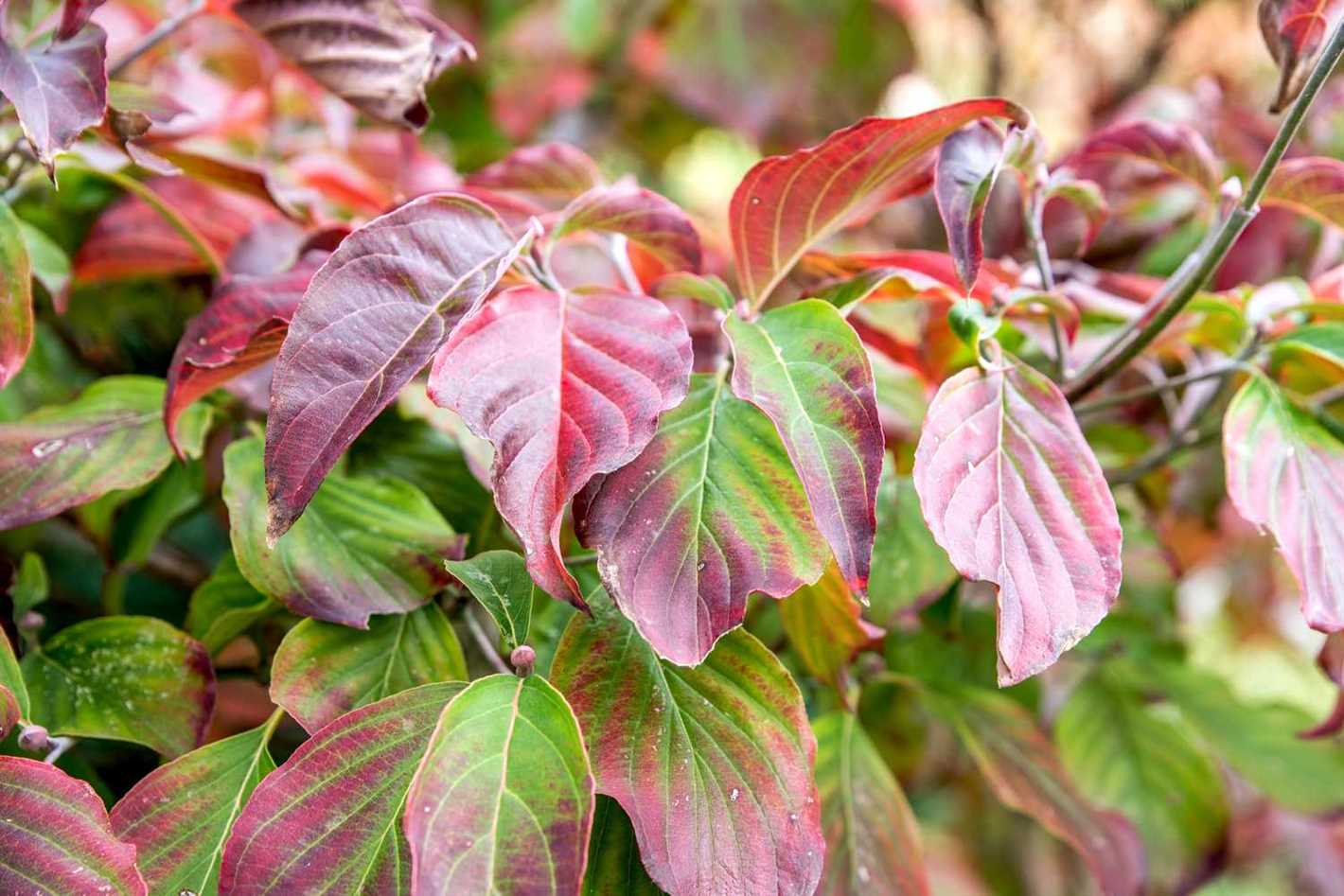

Dogwood trees are a beautiful addition to any landscape. With their vibrant flowers and stunning foliage, they can add color and interest to your outdoor space. Here are some landscaping ideas to help you make the most of your dogwood trees:
1. Create a Dogwood Grove
Plant several dogwood trees together to create a beautiful dogwood grove. Choose different varieties of dogwood trees to add variety in flower colors and foliage. This will create a unique and eye-catching display in your yard.
2. Mix with Evergreens
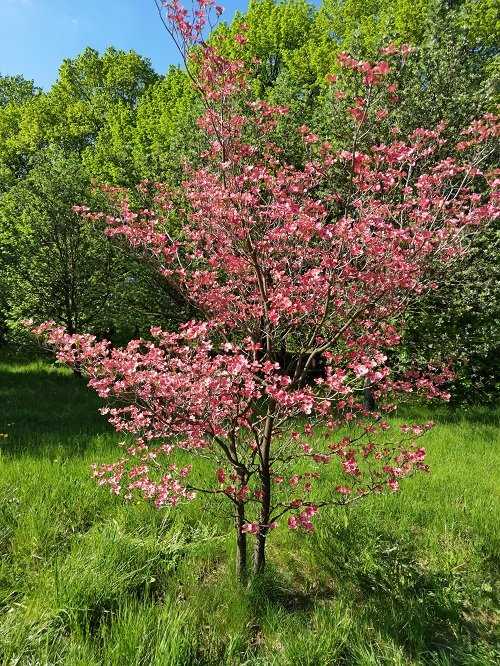

Pair dogwood trees with evergreen trees or shrubs to create an interesting contrast. The bright flowers and colorful leaves of the dogwood trees will stand out against the year-round greenery of the evergreens.
3. Underplant with Perennials
Plant perennial flowers or groundcovers under your dogwood trees to create a layered and diverse look. Choose shade-tolerant plants that will thrive in the dappled sunlight beneath the dogwood trees.
4. Highlight with Lighting
Add outdoor lighting to your dogwood trees to showcase their beauty at night. Install low-voltage landscape lights to illuminate the trunk and branches, creating a magical and enchanting atmosphere.
5. Frame Walkways or Entrances
Plant dogwood trees on either side of a walkway or entrance to create a beautiful frame. This will draw the eye and create a welcoming and inviting focal point for your visitors.
6. Use as a Privacy Screen
Plant dogwood trees close together to create a dense and beautiful privacy screen. This can be especially effective if you choose dogwood varieties with wide canopies that provide ample coverage.
7. Surround a Water Feature
Plant dogwood trees around a pond, fountain, or other water feature to create a natural and peaceful setting. The reflections of the dogwood flowers on the water surface will add an extra touch of beauty.
8. Incorporate in a Mixed Border
Plant dogwood trees alongside other flowering shrubs, perennials, and ornamental grasses to create a dynamic and colorful mixed border. Choose plants with complementary colors and textures to create a visually interesting display.
9. Train as Espaliers
Train dogwood trees to grow flat against a wall or fence as espaliers. This can create a unique and artistic focal point in your garden, while also maximizing space in smaller yards.
10. Provide Wildlife Habitat
Dogwood trees provide food and shelter for a variety of wildlife, including birds and butterflies. By planting dogwood trees in your yard, you can attract and support a diverse range of wildlife, adding to the ecological value of your landscape.
With these landscaping ideas, you can make the most of your dogwood trees and create a stunning and vibrant outdoor space. Whether you choose to plant a dogwood grove, frame a walkway, or create a mixed border, these versatile trees are sure to enhance the beauty of your landscape.
Caring for Dogwood Trees: Common Pests and Diseases
While dogwood trees are generally hardy and disease-resistant, they can still fall prey to a few common pests and diseases. By being aware of these issues and taking appropriate action, you can keep your dogwood trees healthy and thriving.
Pests
- Aphids: These small insects feed on the sap of dogwood leaves, causing them to curl and distort. Aphids can be controlled through regular inspection and the use of insecticidal soaps or horticultural oils.
- Scale insects: These pests attach themselves to the bark of dogwood trees and suck sap, causing yellowing leaves and a sticky residue. They can be controlled with a thorough application of horticultural oil in early spring before the adult scales start to mature.
- Leaf miners: These insects create tunnels in the leaves, resulting in brown or blotchy areas. Pruning and destroying the affected leaves can help control leaf miners.
- Japanese beetles: These beetles feed on the leaves of dogwood trees, causing skeletonized foliage. Handpicking them off the tree or using insecticides can help control Japanese beetle infestations.
Diseases
- Anthracnose: This fungal disease is common in dogwood trees and causes leaf spot, twig dieback, and cankers. To control anthracnose, prune affected branches and ensure trees have adequate air circulation.
- Powdery mildew: This fungal disease appears as a white, powdery coating on the leaves and stems of dogwood trees. Regularly inspecting the tree and providing good air circulation can help prevent powdery mildew.
- Root rot: Excessive moisture and poor drainage can lead to root rot, which can cause the tree to decline. To prevent root rot, ensure proper drainage and avoid over-watering.
Conclusion
By being vigilant and taking appropriate action, you can protect your dogwood trees from common pests and diseases. Regular inspection, pruning, and providing good air circulation are key to keeping your trees healthy and beautiful.
Questions and Answers:
What are the different types of dogwood?
There are several different types of dogwood, including the Cornus florida (flowering dogwood), Cornus sericea (red osier dogwood), and Cornus alba (tatarian dogwood). Each type has its own unique characteristics and preferred growing conditions.
How do I cultivate dogwood?
To cultivate dogwood, you will need to choose a suitable location in your garden that receives partial shade and well-drained soil. You can plant dogwood trees in early spring or fall, making sure to dig a hole that is twice the width of the root ball and at the same depth. Water the tree regularly and apply a layer of mulch around the base to retain moisture.
Can I propagate dogwood through cuttings?
Yes, you can propagate dogwood through cuttings. The best time to take a cutting is in the summer, when the tree is actively growing. Choose a healthy stem and make a clean cut just below a node. Remove any lower leaves and dip the cut end in rooting hormone. Plant the cutting in a well-draining potting mix and keep it consistently moist until roots develop.
What are some tips for exploring different varieties of dogwood?
If you want to explore different varieties of dogwood, a good starting point is to visit local nurseries and botanical gardens that specialize in woody plants. Look for dogwood festivals or events in your area, where you can see and learn about different varieties. Joining a gardening club or online community can also provide you with a wealth of information and opportunities to exchange plant materials with fellow enthusiasts.
Are all types of dogwood suitable for every climate?
No, not all types of dogwood are suitable for every climate. Different varieties have different temperature and moisture requirements. For example, Cornus florida is best suited for USDA hardiness zones 5 to 9, while Cornus sericea can tolerate colder temperatures and is suitable for zones 3 to 8. It’s important to research and choose a variety that is recommended for your specific climate.







